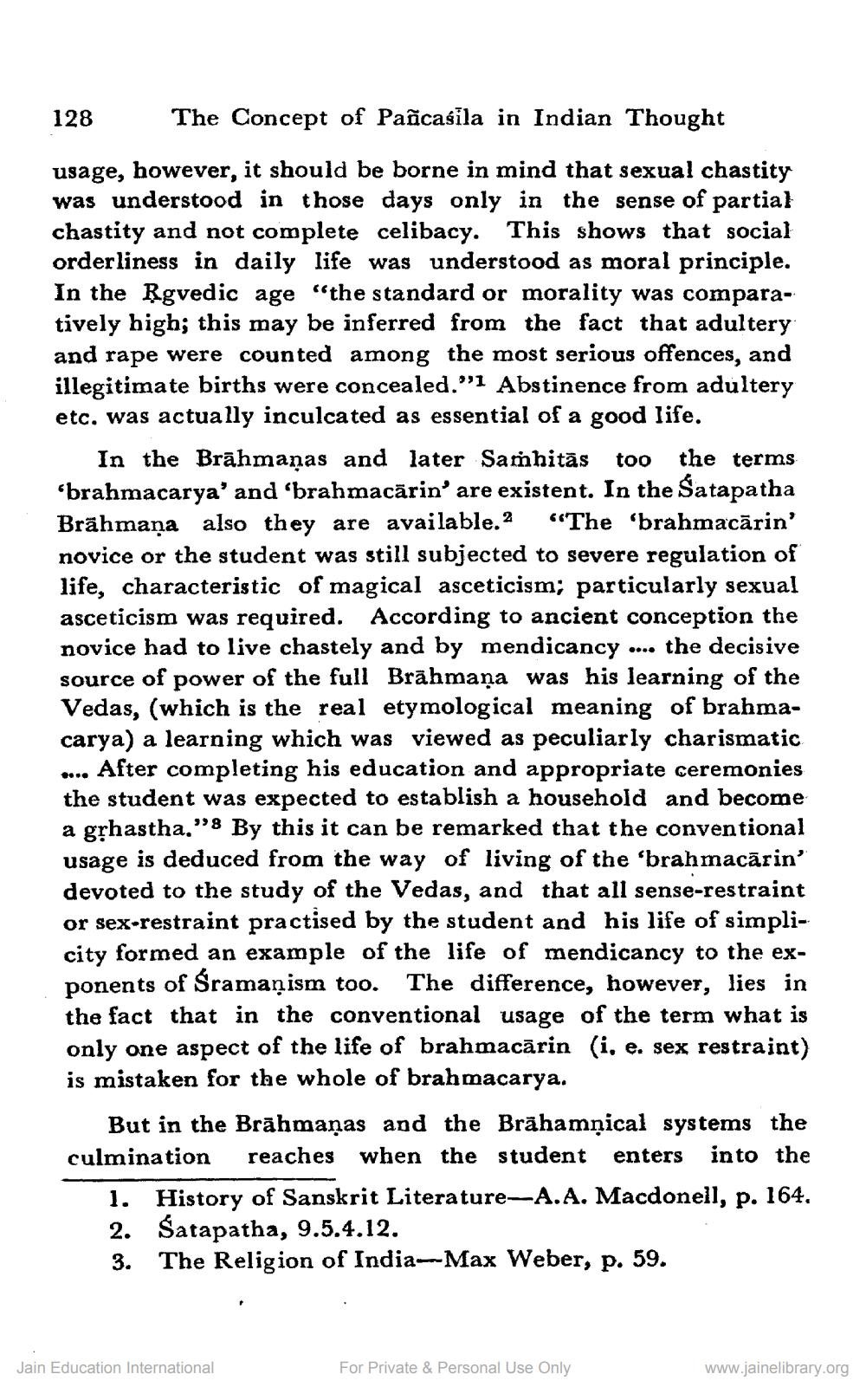________________
128
The Concept of Pañcasila in Indian Thought
usage, however, it should be borne in mind that sexual chastity was understood in those days only in the sense of partial chastity and not complete celibacy. This shows that social orderliness in daily life was understood as moral principle. In the Rgvedic age “the standard or morality was comparatively high; this may be inferred from the fact that adultery and rape were counted among the most serious offences, and illegitimate births were concealed."1 Abstinence from adultery etc. was actually inculcated as essential of a good life.
In the Brāhmaṇas and later Samhitās too the terms 'brahmacarya' and 'brahmacārin' are existent. In the Satapatha Brāhmaṇa also they are available.2 "The 'brahmacārin' novice or the student was still subjected to severe regulation of life, characteristic of magical asceticism; particularly sexual asceticism was required. According to ancient conception the novice had to live chastely and by mendicancy .... the decisive source of power of the full Brāhmaṇa was his learning of the Vedas, (which is the real etymological meaning of brahmacarya) a learning which was viewed as peculiarly charismatic .... After completing his education and appropriate ceremonies the student was expected to establish a household and become a grhastha,"8 By this it can be remarked that the conventional usage is deduced from the way of living of the 'brahmacārin' devoted to the study of the Vedas, and that all sense-restraint or sex-restraint practised by the student and his life of simplicity formed an example of the life of mendicancy to the exponents of Sramanism too. The difference, however, lies in the fact that in the conventional usage of the term what is only one aspect of the life of brahmacārin (i, e. sex restraint) is mistaken for the whole of brahmacarya.
But in the Brāhmaṇas and the Brāhamņical systems the culmination reaches when the student enters into the
1. History of Sanskrit Literature-A.A. Macdonell, p. 164, 2. Satapatha, 9.5.4.12. 3. The Religion of India--Max Weber, p. 59.
Jain Education International
For Private & Personal Use Only
www.jainelibrary.org




